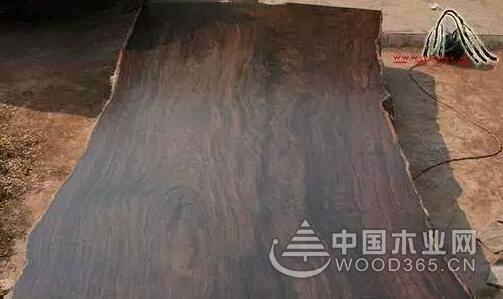What kind of wood is "leather gray"?
Currently known as ebony wood in the handicraft market, “leather ash†is the most common type, and most of the domestic market is produced in Mozambique. In the log market, it is generally referred to as “leather ashâ€, and it is also called “black rosewoodâ€.
Although the leather ash is also commonly known, it is also a special name with a famous name. Once the finished product is made, it is basically called “ebony†in the handicraft market, and the “real body†has been hidden since then.

Leather gray wood, scientific name: windmill wood
Latin name: Combretum imberbe
English name: Monzo
Section: Making the Gentle Branch Combretaceae
Generic name: Combretum
Commonly known as: leather gray, black rosewood, ebony
Windmill wood is produced in places like Mozambique in Africa. It grows slowly, the wood is very firm, the hardness is high, the toughness is strong, the structure is dense, the stripe is deep and shallow, the wear and corrosion resistance, the color is black and purple. The longer the wood-made appliance is used, the darker the color is, and it has a certain collection value, but the windmill wood does not belong to the mahogany.
The color of the new cut surface is grayish yellow, the color of the old wood is close to grayish black, the pores are thicker, and there are obvious hairy lines. Wood oil is poor, and it is easy to crack in a dry climate. Crafts made of windmill wood are more common in the market.
Black rosewood (or ebony), like red sandalwood and green sandalwood, is a means for merchants to "transform" non-redwood wood into precious redwood. Relatively speaking, the hardness and density of this kind of wood is better, but it is not a traditional mahogany material, not in the national standard of mahogany, but the material is obviously superior to other wood species, and can be used as a substitute for traditional mahogany.
Structural features: Bark: 1-2cm thick, crisper, rough surface, not easy to peel off. The rind is dark gray-brown, thin and has a regular longitudinal split. Easy to small pieces of detachment. Endothelial purple brown to dark brown; stone cells are developed, layered, obliquely cut surface white and brown pattern is obvious.
Cross section: The difference between heart and sapwood is obvious. The heartwood is dark brown to coffee, slightly purple, and dark brown for a long time. With thin and thin pinstripes. The sapwood is yellowish white and 2-3 cm wide. The growth wheel is not obvious.
Macrostructure: semi-annular hole material. The larger the tube hole is obvious under the naked eye, slightly less, medium to large; the main is a single tube hole, partially inclined; containing dark brown sediment. Axial thin-walled tissue under the magnifying glass is slightly visible, sparsely tubular and wheel-shaped, visible under the wood ray magnifying glass; due to the large amount of white crystals, the gloss is strong, and the white thin line is dense and narrow.
Identification points: the bark surface is rough, with regular longitudinal cracks, endothelium to dark brown, and the surface of the white-brown country is obviously black. The heartwood is black and purple for a long time. The wood ray is light and strong, and it is white and thin. The material is very hard.
Wood material: shiny, slightly oily. Texture interlaced; fine structure; very heavy and hard; high strength. The processing is difficult, the surface of the surface is slightly raised; the wear resistance is strong; the nail is easy to crack, and the hole must be drilled first. Very resistant to corrosion. Slow drying, easy to crack, preferably air dry. The air dry density is greater than 0.91-1.10 g/cm3.
In view of the fact that the windmill wood sapwood is a living place for the geese, endangering the product, the manufacturer should cut all the sapwood to ensure the durability of the product.
Wood use: suitable for high-grade furniture, flooring, sculpture, handicrafts, etc.
Because some of the characteristics of the ash wood are similar to striped ebony, some bad merchants often use windmill wood to pretend to be the wood of Indonesian striped ebony. Mainly distributed in tropical Africa, most of the timber is transported from China to Mozambique in the form of containers to China. Due to the relatively large demand in the Chinese market, the import volume is relatively large.
Knife Sharpener ,Knife Sharpener,Knife Sharpener Machine,Sharpener Knife Kitchen
NINGBO HOZ TRADING CO.,LTD , https://www.hoz-kitchenware.com